Dynamic Pages with Strapi and Next.js 13: A Journey to the Heart of Dynamic
By Konrad Kapica
By Konrad Kapica

Welcome to the modern world of website creation, where the combination of Strapi and Next.js 13 sets new standards. This article will guide you through the key aspects of these technologies and explain why they are an efficient and cost-effective choice for dynamic websites.
Strapi, as a headless CMS, offers flexibility and control over content, allowing for quick and efficient API creation. One of the key features of Strapi is Dynamic Zones, which enable the creation of data structures that are not only flexible but also easily configurable and scalable.
Imagine building a website structure like LEGO bricks. You want to be able to add, remove, and reorder blocks without having to dig through a ton of code each time. Dynamic Zones in Strapi allow for the creation of modular and flexible layouts, making content easy to modify and manage.
• Defining Dynamic Zones: In Strapi, we create a new Collection Type, for example, CustomPage. In its schema, you add a Dynamic Zone field. You could name it myDynamicZone.
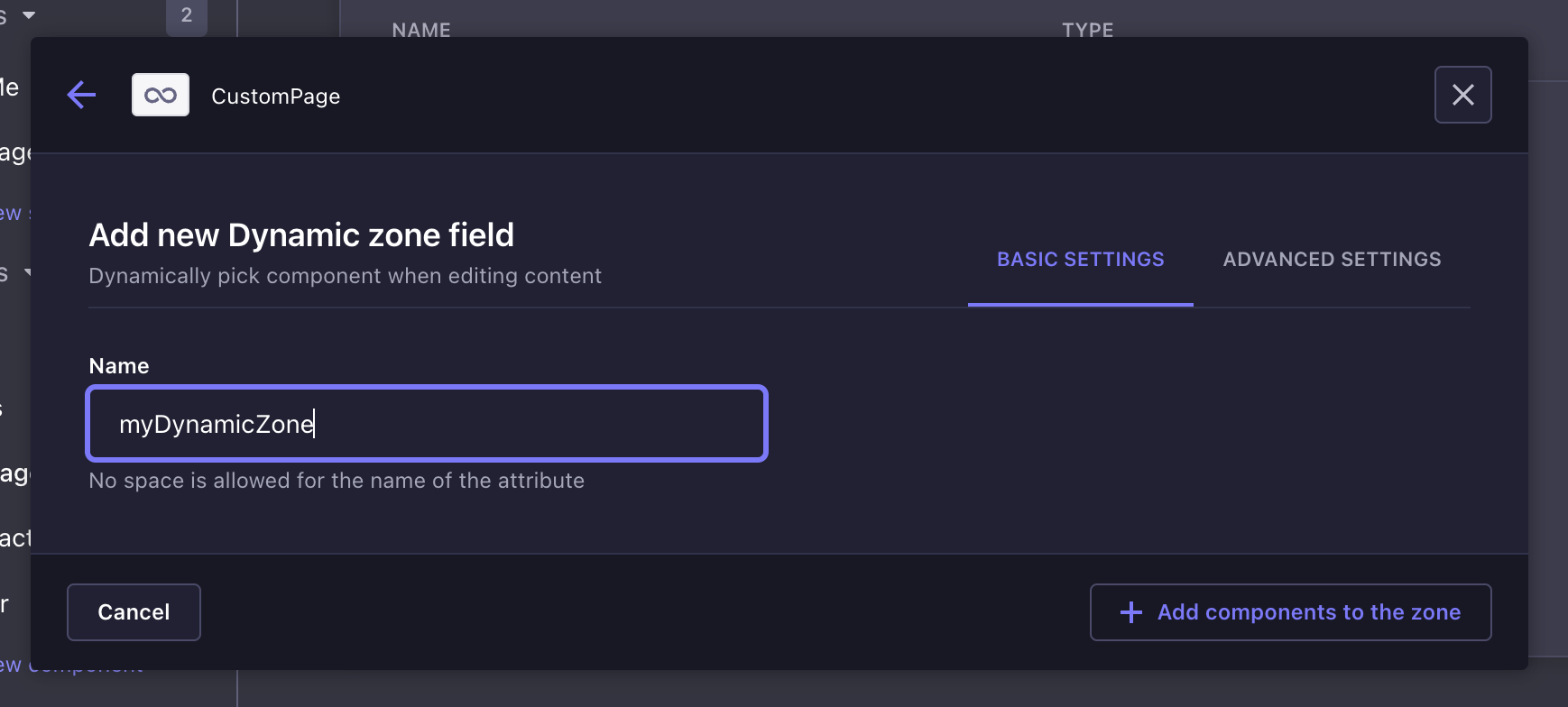
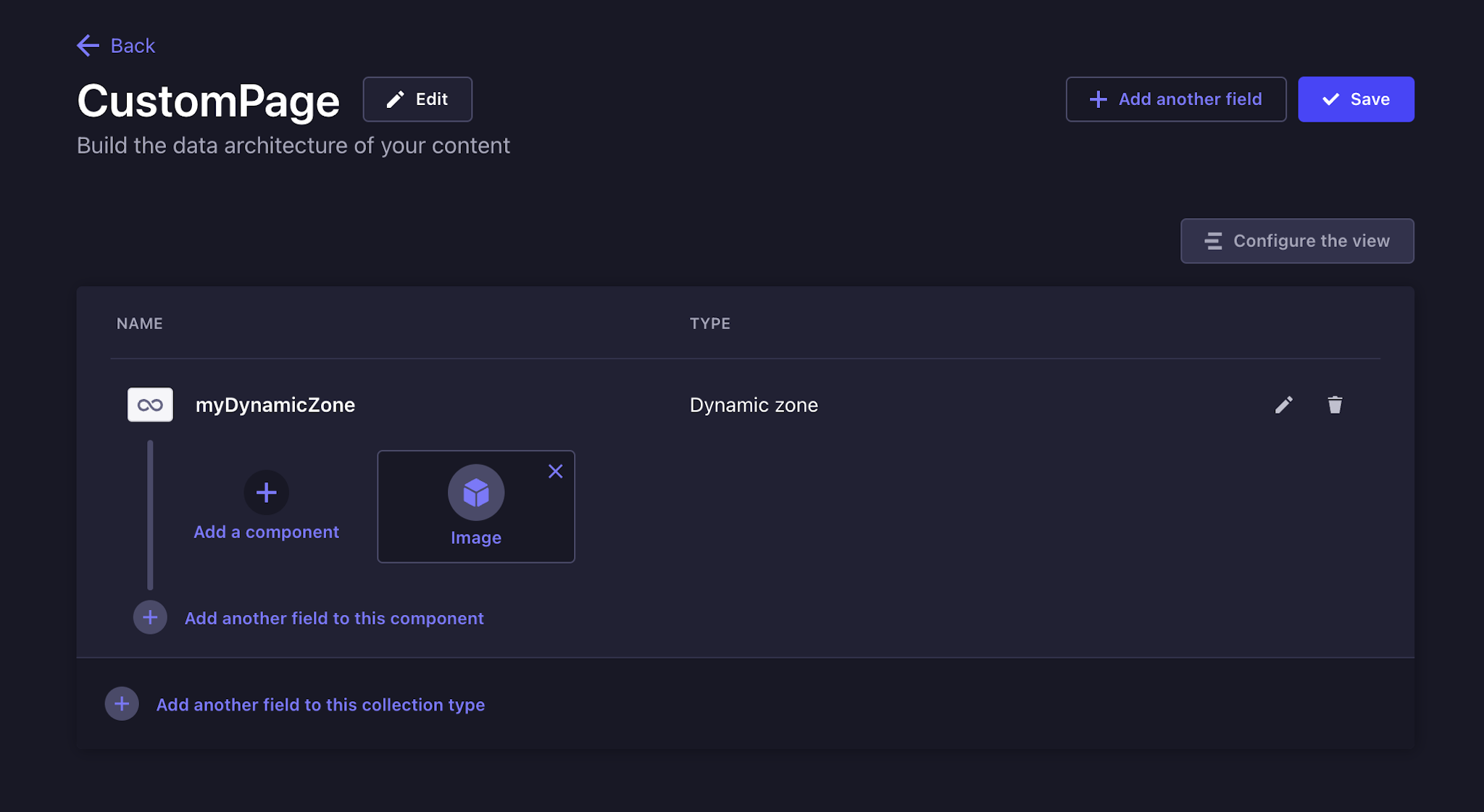
• Component Configuration: In this field, you can place different components – small, reusable parts of your site, like banners, galleries, texts. Each component can be used multiple times in different contexts on the site.
• Content Management: Now, creating or editing your Page, you can add, remove, and reorder these components, creating unique layouts for each page. Without the need to touch the code!
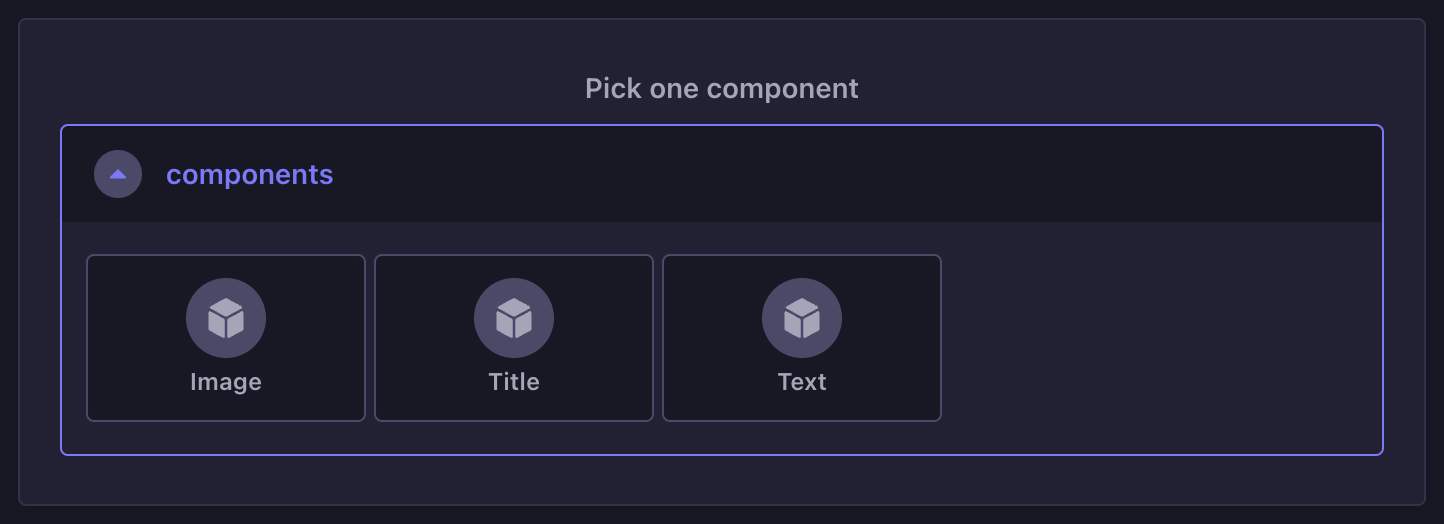
Next.js 13 is a React-based platform that offers modern solutions for dynamic page rendering. With its integration with Strapi, it is possible to efficiently create dynamic and functional websites.
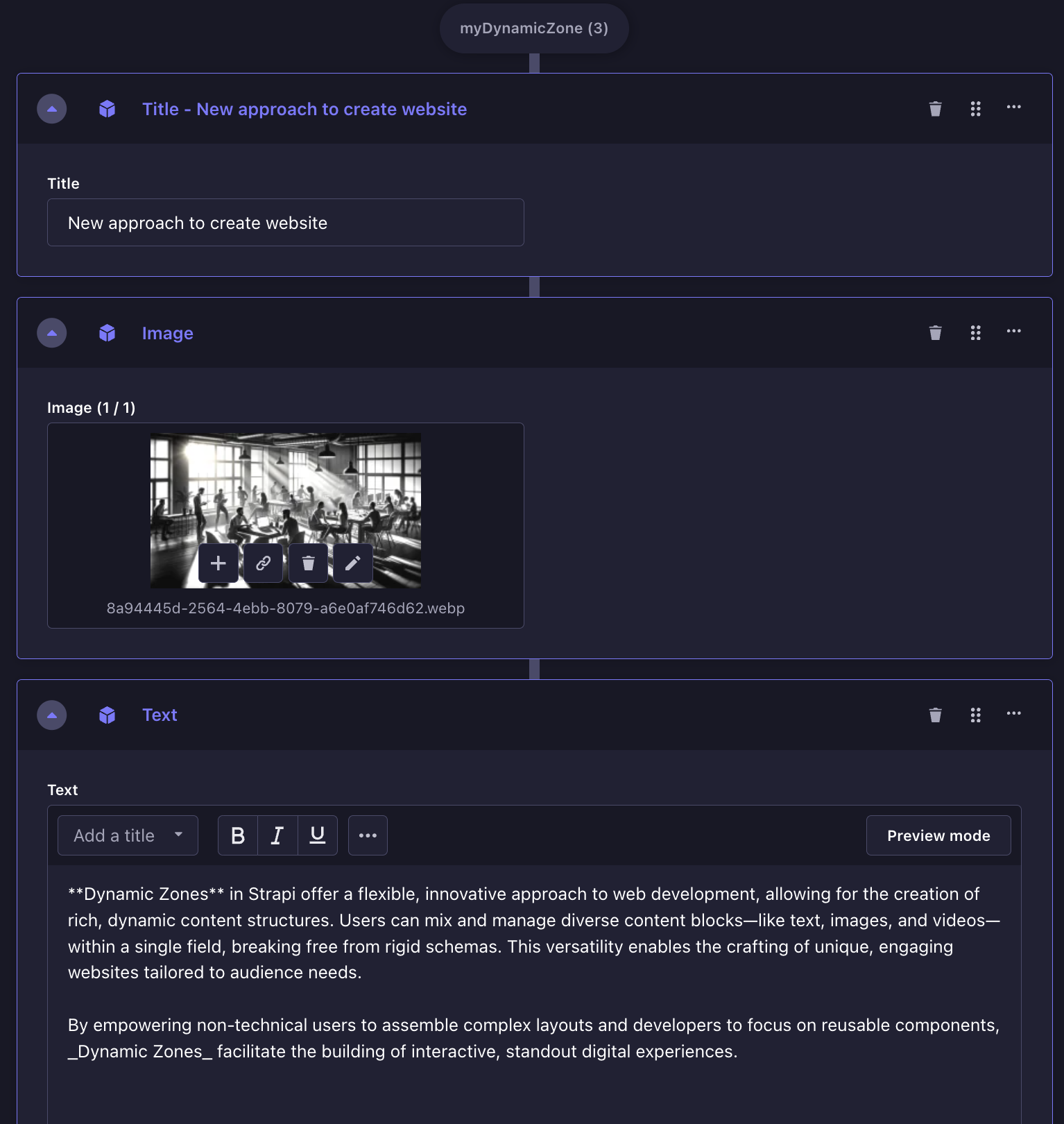
• We fetch our data from our Strapi API.
• Based on the data from Dynamic Zones, we dynamically render the appropriate components. Each Strapi component has its counterpart in a previously built component in Next.js.
• Dynamic routing: Next.js 13 allows for easy creation of dynamic routes (dynamic routing), making each page have a unique URL based on CMS data.
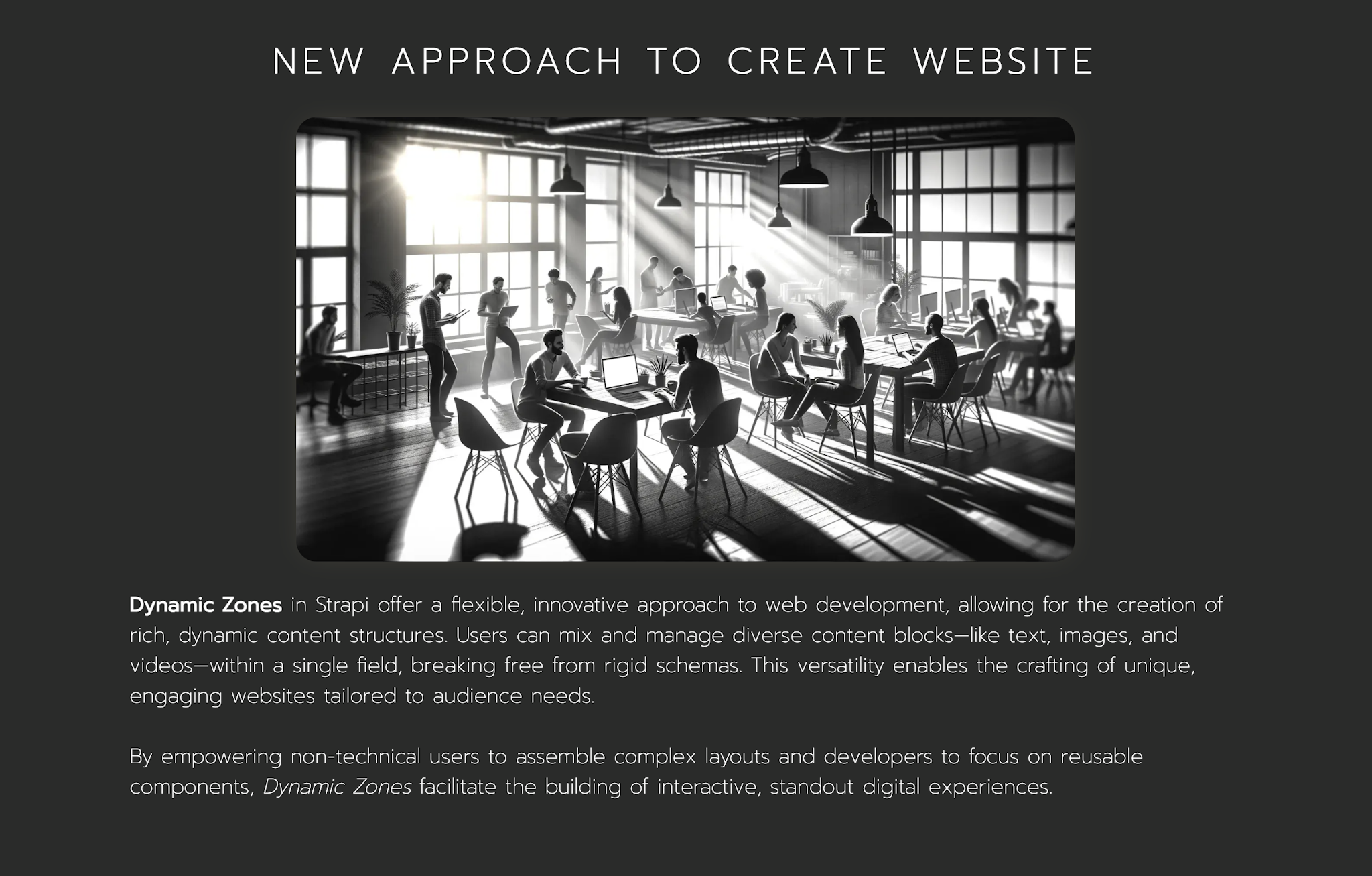
The combination of Strapi and Next.js 13 offers a range of advantages:
• Flexibility in content management: Strapi provides ease and flexibility in managing content, which is crucial for dynamic pages.
• Speed and efficiency: Next.js 13 ensures fast page rendering, which is key for user experience.
• Ease of integration: Both technologies work well together, facilitating the website creation process.
• Scalability: This solution is fully scalable, allowing for easy project development as needs grow.
Choosing Strapi in combination with Next.js 13 as tools for creating dynamic websites is not only technologically advanced but also economically viable.
Strapi offers flexibility and power in managing content, while Next.js 13 is a solid and modern platform for rendering that content.
This combination offers unprecedented flexibility, efficiency, and ease of content management, placing it at the forefront of modern solutions in creating dynamic and interactive websites.
I hope this article has shed some light on the topic and will make you look at website creation with even more enthusiasm. See you in the code!
But how to implement maintenance mode in Next.js? Is it as easy as configuring a plugin on WordPress for a few minutes? Of course it is!
Magento, compared to Medusa, may lead to higher long-term costs due to its licensing model and the risk associated with the gradual decline in the popularity of the PHP language...